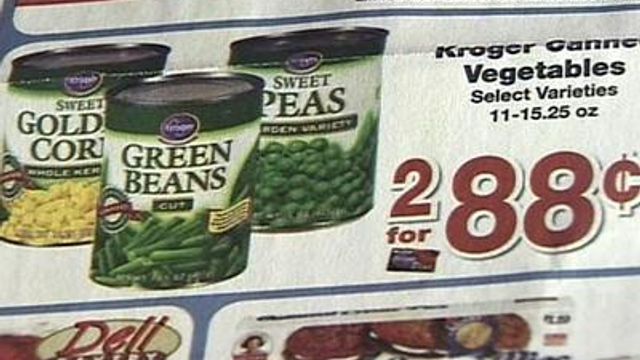5 On Your Side
Trim fat from your grocery bill
The food budget is a great place to cut spending, and it's an area where savings can add up over time without making major life adjustments.
Posted — UpdatedFirst, it was gasoline prices on the rise. Now, food? It's taking a growing chunk out of household budgets.
According to the U.S. Department of Labor, egg prices are up 60 percent from a year ago. Pasta prices jumped 30 percent, and fruits and vegetables increased 20 percent.
Some experts say higher food costs could actually have more of an impact on the economy than high oil prices. The average household spends three times as much for food as for gasoline.
But the food budget is a great place to cut spending, and it's an area where savings can add up over time without making major life adjustments.
Here are some tips:
Make a list and stick to it. Don't shop when you're hungry. And don't take your children with you. Those are ideas most everyone knows. But here are some other ideas you might not have thought about:
Just because it's in an ad, it doesn't mean it's on sale. When checking weekly sales ads in the newspapers or online, keep in mind that companies often pay to have their products featured. Do pay attention to what is on sale. When it's staples, like paper products, cereal and juice, buy extra.
Clip coupons and then some. Many stores let you use both a manufacturer's coupon and a store coupon at the same time on the same item. Many stores also accept coupons from other stores and even expired coupons. Just ask.
Look beyond the Sunday paper for coupons. Visit Web sites, such as valpack.com. Also, ask for a price match. If a product is on sale at a competitor, many stores will sell it at the same price. Take the sale circular as proof.
Bigger doesn't always mean a better price. Check the unit price and do the math. A recent study shows that in a typical supermarket, the larger size of a given brand is a poorer value 25 percent of the time. And remember, buying four items for $1, might not really be a deal. If not, buy only what you'll use.
Don't buy toiletries at a grocery or drug store. Go to a large discount store or warehouse club. Soap, shampoo, shaving cream and similar items can be 20 percent to 50 percent less. The same goes for household items, such as laundry detergent and cleaning supplies.
Weigh the cost of convenience. Prepped and cut foods often cost more. For example, a 10-ounce bag of trimmed romaine lettuce runs about around $3.59. A whole head was $1.99. Shredded carrots could cost you $2.49; shred them yourself and pay 99 cents for a pound.
Buy store-brand, or generic. You can find everything from salsa to bread to cookies to napkins. Store brands can save you money and often, the food items taste just as good, if not better. In fact, many store brands are actually made by the same companies that make the name brands.
Copyright 2024 by Capitol Broadcasting Company. All rights reserved. This material may not be published, broadcast, rewritten or redistributed.





